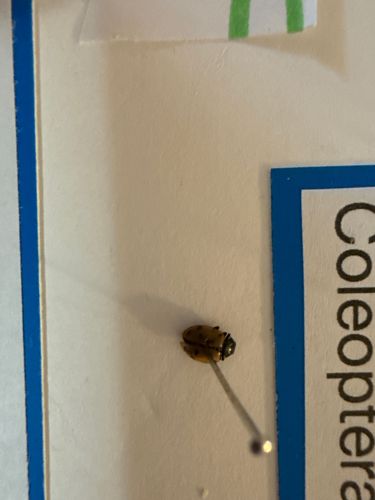Ladybug (or Ladybird beetle)
Scientific Name: Coccinellidae (Family, specific species not identifiable from image)
Order & Family: Order: Coleoptera, Family: Coccinellidae
Size: Typically 1-10 mm, depending on the species.

Natural Habitat
Gardens, agricultural fields, meadows, forests, and often found indoors during colder months. They are widespread globally.
Diet & Feeding
Primarily predatory, feeding on soft-bodied insects like aphids, mealybugs, scale insects, whiteflies, and mites. Some species may also consume pollen or nectar, and a few are herbivorous.
Behavior Patterns
Ladybugs undergo complete metamorphosis (egg, larva, pupa, adult). Adults are known for their distinctive dome-shaped bodies and often bright coloration, which serves as a warning to predators. They are generally active during the day and can overwinter in large aggregations, often seeking shelter in homes or other protected areas.
Risks & Benefits
Benefits: Ladybugs are highly beneficial insects, widely used as biological control agents against agricultural pests, helping to protect crops and gardens from damage by aphids and other sap-feeding insects. Risks: Some invasive species, like Harmonia axyridis (Harlequin ladybug), can outcompete native ladybug species and may occasionally bite humans (though not harmful) or be a nuisance when they overwinter indoors in large numbers. Herbivorous species can be minor plant pests.
Identified on: 10/18/2025